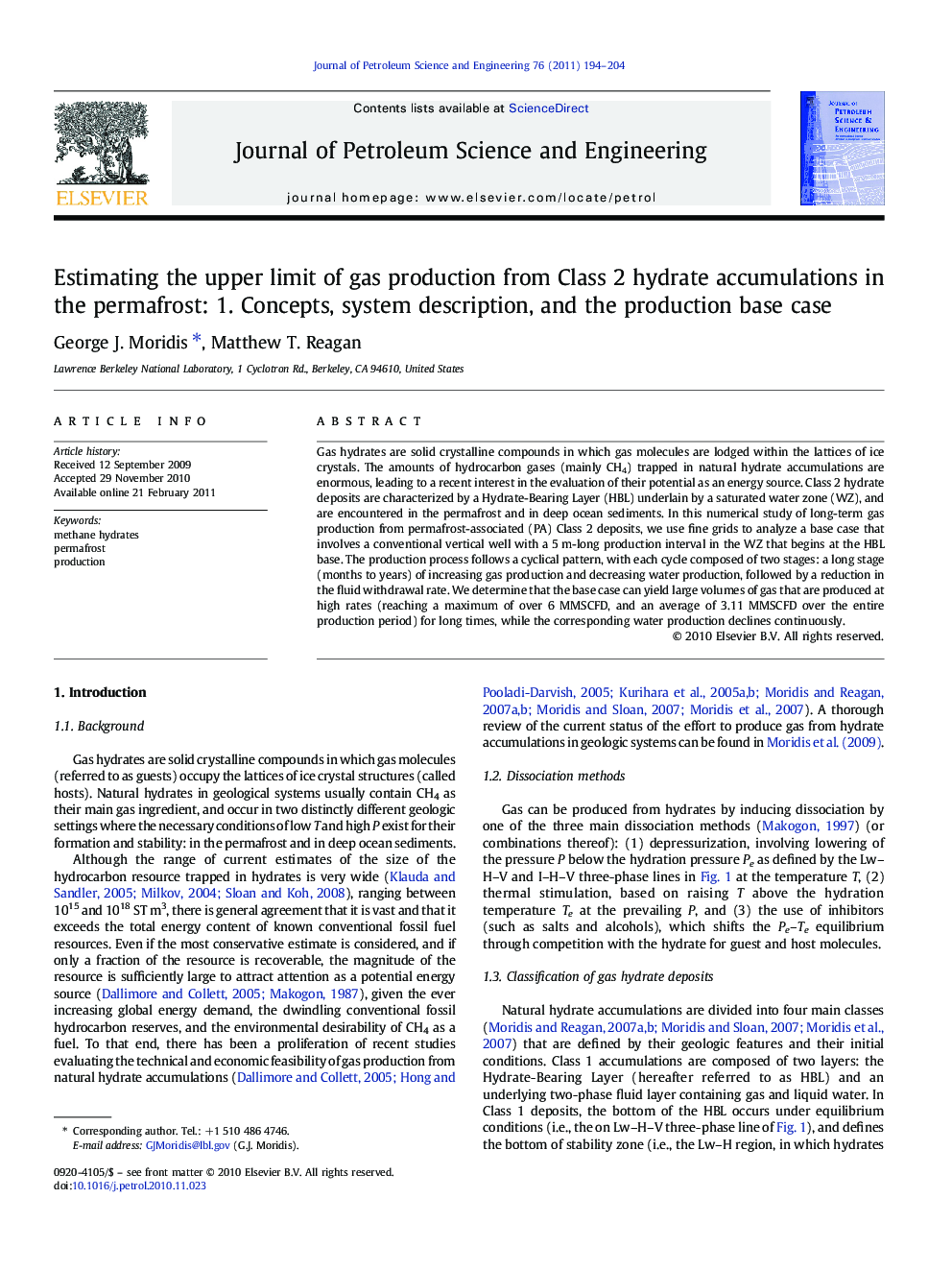| کد مقاله | کد نشریه | سال انتشار | مقاله انگلیسی | نسخه تمام متن |
|---|---|---|---|---|
| 1755889 | 1522857 | 2011 | 11 صفحه PDF | دانلود رایگان |

Gas hydrates are solid crystalline compounds in which gas molecules are lodged within the lattices of ice crystals. The amounts of hydrocarbon gases (mainly CH4) trapped in natural hydrate accumulations are enormous, leading to a recent interest in the evaluation of their potential as an energy source. Class 2 hydrate deposits are characterized by a Hydrate-Bearing Layer (HBL) underlain by a saturated water zone (WZ), and are encountered in the permafrost and in deep ocean sediments. In this numerical study of long-term gas production from permafrost-associated (PA) Class 2 deposits, we use fine grids to analyze a base case that involves a conventional vertical well with a 5 m-long production interval in the WZ that begins at the HBL base. The production process follows a cyclical pattern, with each cycle composed of two stages: a long stage (months to years) of increasing gas production and decreasing water production, followed by a reduction in the fluid withdrawal rate. We determine that the base case can yield large volumes of gas that are produced at high rates (reaching a maximum of over 6 MMSCFD, and an average of 3.11 MMSCFD over the entire production period) for long times, while the corresponding water production declines continuously.
Research Highlights
► We estimate the maximum possible gas production from Class 2 permafrost-associated hydrate deposits under optimal conditions.
► We evaluate production from a hydrate deposit under realistic conditions using a conventional vertical well.
► The gas production rate is variable, and reaches a maximum before beginning to decline.
► Large volumes of gas can be produced at high rates over long periods.
► Water production declines with time.
Journal: Journal of Petroleum Science and Engineering - Volume 76, Issues 3–4, March 2011, Pages 194–204